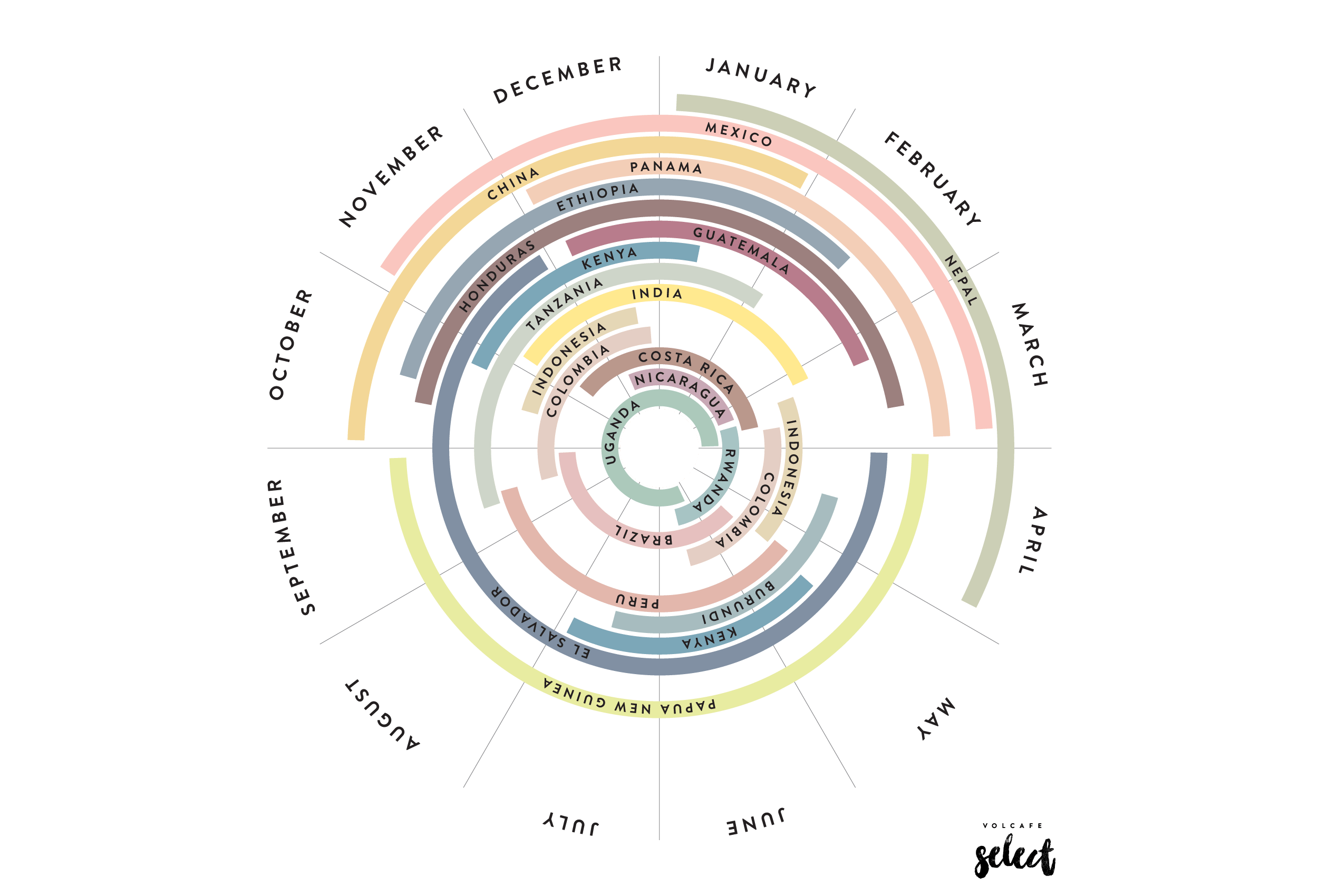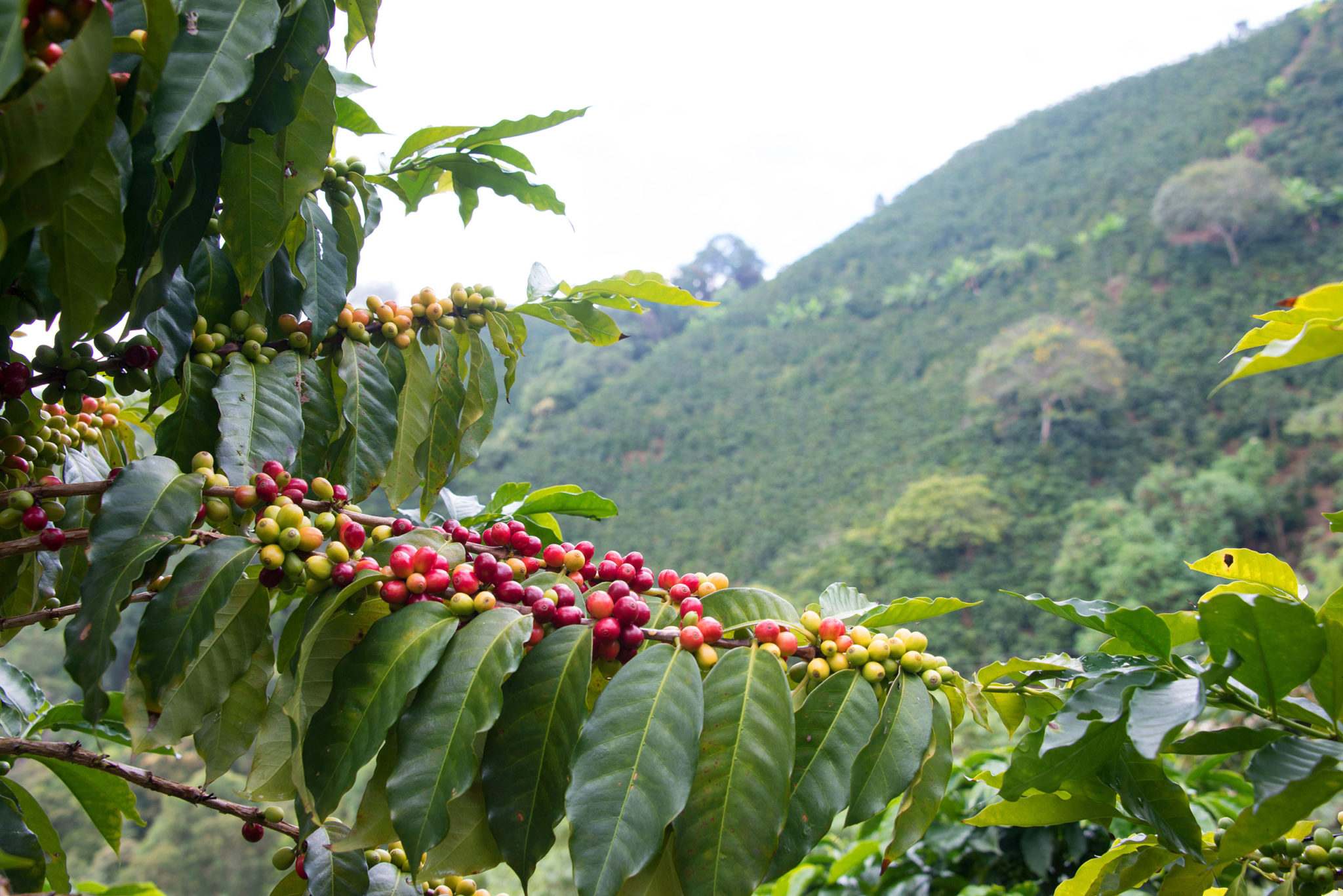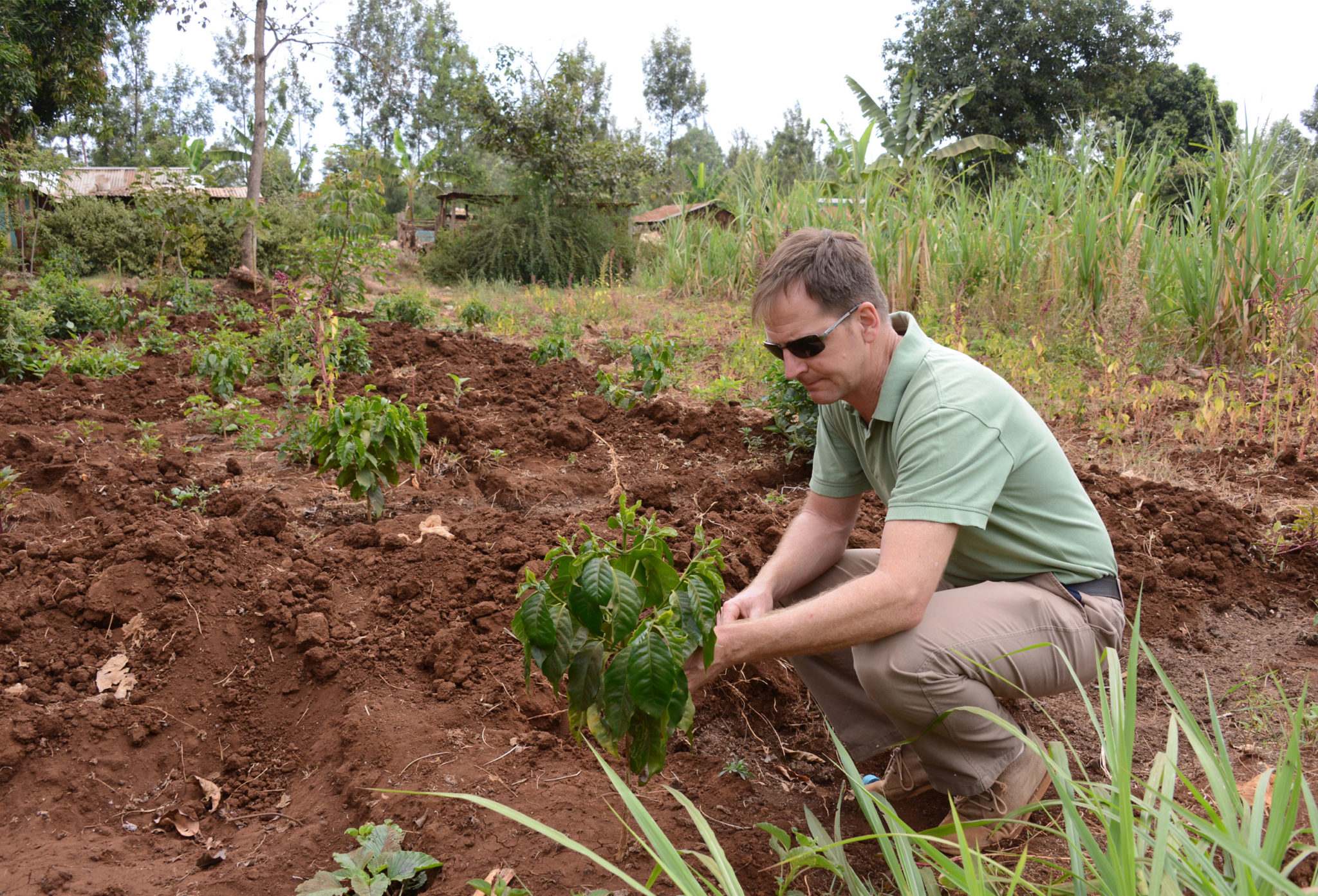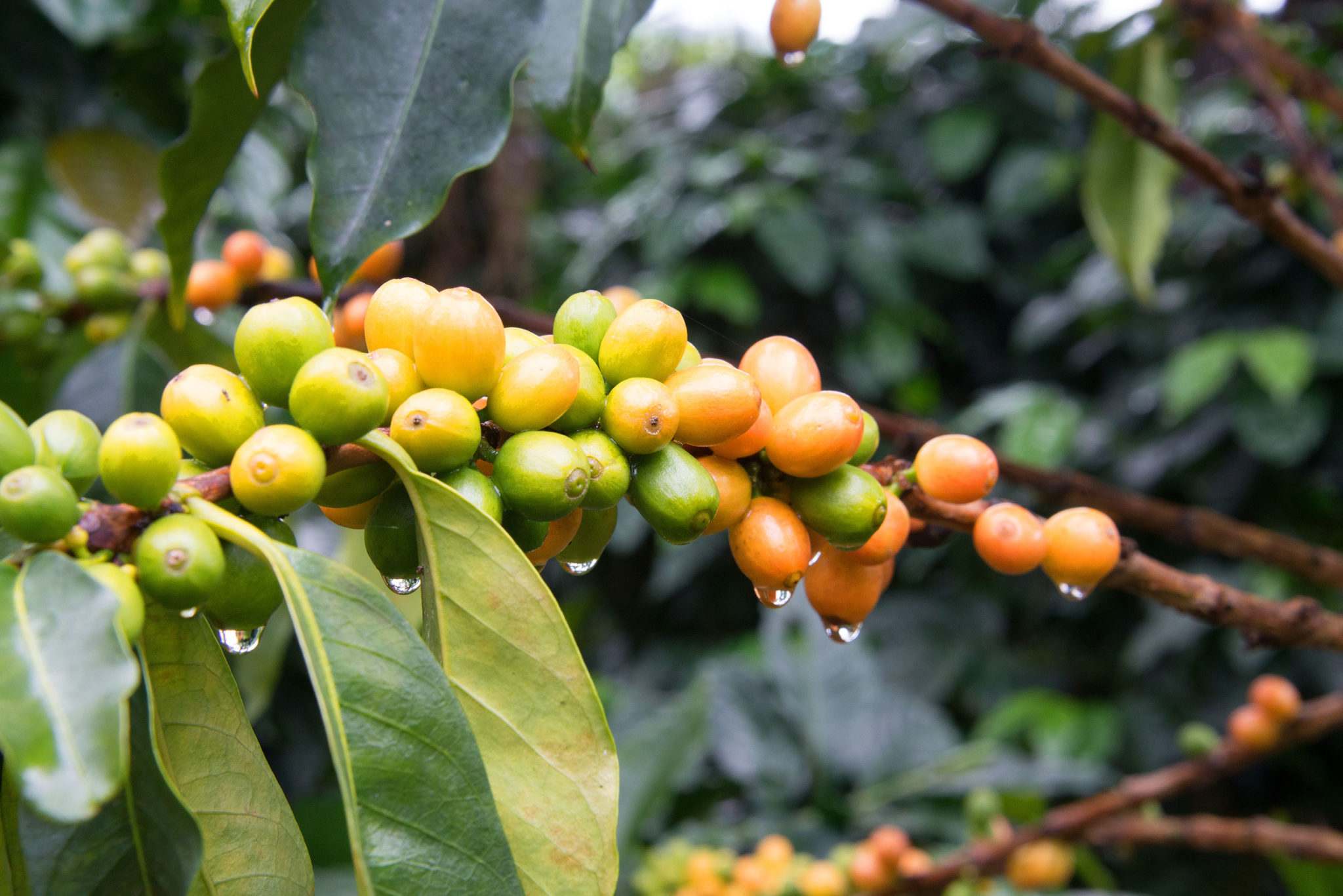WHEN IS YOUR COFFEE IN SEASON?
We are delighted that consumers are increasingly insisting on seasonal fruits and vegetables. In this article, we take a closer look at the seasonality of coffee. We have arranged to meet with Dirk. Dirk is a coffee trader at Volcafe. As a coffee exporter in Kenya, Dirk has acquired an enormous amount of coffee knowledge over the past 20 years. We are very happy to take advantage. The main trigger for this article is the new ViCAFE Season Lot Subscription. This new coffee subscription not only guarantees different coffees, but also optimal timing.

At the moment, we are enjoying fresh asparagus from the region. Is there a coffee equivalent?
I would say all coffees grown in the northern hemisphere. These coffees were harvested between October and December, then processed and shipped between January and May. The first coffees arrived in Europe at the end of February. The coffee from the Aprolma Cooperative in Honduras would be a good example in your case.
Geographically, we speak of coffees from Central America, from Mexico to Panama and the North of Colombia. On the other side of the Atlantic, this would include the northern part of East Africa, in particular Ethiopia, Kenya and the North of Tanzania. In Asia I think of India, Vietnam and Laos, to name only the most important growing regions.
Why is the seasonality of coffee not so important for Swiss coffee fans?
Most Swiss drink coffee blends. With coffee blends the focus is not on seasonality but on a consistent quality. The coffee should always taste the same, whether in May or December. By blending, the roaster combines different coffees so that the respective properties and qualities complement each other optimally. Large roasters often think in so-called “quality baskets”, which are groups of coffees that have similar properties and are therefore easier to alternate with each other.
What does seasonality mean for a coffee trader?
The right timing is key. The coffee trade is heavily dependent on the timing of the local coffee harvest. We basically want to bring the fresh coffee to the roasters in Europe as quickly as possible. The dilemma is that the better coffees are often only picked later in the harvest. So, we have to wait for the perfect time when freshness and quality are optimal. That takes a lot of experience and an active exchange with local producers and exporters.
You have been exporting coffee to Kenya for over 20 years. Can you explain seasonality to us using the example of Kenya?
First, a bit about the geography: Kenya is on the equator, just like Colombia or Indonesia. As a result, the country has two rainfall seasons. Accordingly, there are two periods in which the coffee trees bloom: The first time window is in March / April. This results in a harvest from October to December. The second period is in September / October, which in turn leads to a harvest from April to June. Interestingly, certain trees have two crops while others only produce one crop.
Why is that so?
There are basically three relevant factors: the location, altitude and the type of farming. If the tree is exactly on the equator, one can assume that it produces two harvests. The height in turn means that the ripening process takes more time. And finally, a well-organised farm tries to influence the cycle of the trees to make the management as easy as possible. For example, they can irrigate the trees at the right moment so that the blooming of these trees is synchronised. Plant psychology plays an enormous role and is extremely complex.
Can you guide us through the growth of a coffee cherry?
Let us start in the dry season. Dryness is stressful for the coffee plant. It is struggling to survive and wants to reproduce. Towards the end of the dry season, the tree forms small spikes, which are unopened flowers. Now the tree is waiting for the rain for days to weeks on end. It is awesome how sensibly the trees react to weather changes. If the first rains (at least 12 mm) arrive, it takes exactly seven days until the flowers open. Your Swiss watch will not be more on time. The trees bloom for three to four days and smell strongly of jasmine.

Then the big show is over. If the flower has been pollinated, small pin heads form – the basis for the fruit. The fruit begins to grow quickly. In total, however, it takes six to eight months until the coffee cherries are ripe and red. Six months is the fastest I’ve personally seen. These are coffees that grow on less than 1000 m above sea level and get plenty of water. The higher, the more time the coffee takes to develop. Your Miju, for example, grows at over 2000 m above sea level. Such beans have a dense cell structure and develop more complexity.
How long does a coffee bean take from the tree to the ViCAFE roaster in Zurich?
To use Kenya as an example again: The Windrush for the Hausmischung is harvested and processed from October to December. In February / March the coffees are slowly but surely ready for shipping from Mombasa. Around 30 days on the water, then either over the Rhine or by truck to Zurich. I would say the coffee reaches ViCAFE about six to seven months after the harvest.
Is there such a thing as an optimal age for green coffee? Or the fresher, the better?
You would have to roast and drink some coffees as soon as possible. I am thinking of low-land coffees, for example from Brazil or Honduras. For coffees that are grown higher, it takes a little more time to reach the peak of their quality potential. These coffees are hard and dense. For top coffees from Kenya or Ethiopia, this can take nine to twelve months.
What do young coffees taste like?
Green, grassy, sometimes like vegetables. The body is rather thin, watery. The espresso can develop a sharp acidity because the acid is not yet nicely integrated. This can only be partially compensated for when roasting.
Does the processing method have an impact on freshness?
In addition to the intrinsic quality, the drying process is crucial. Not too fast, not too slow. Drying not only affects the moisture of the bean but also the “Water Activity”, which is an indicator of the stability and thus of the “durability” of the bean.Is there such a thing as an optimal age for green coffee? Or the fresher, the better?
You would have to roast and drink some coffees as soon as possible. I am thinking of low-land coffees, for example from Brazil or Honduras. For coffees that are grown higher, it takes a little more time to reach the peak of their quality potential. These coffees are hard and dense. For top coffees from Kenya or Ethiopia, this can take nine to twelve months.
What do young coffees taste like?
Green, grassy, sometimes like vegetables. The body is rather thin, watery. The espresso can develop a sharp acidity because the acid is not yet nicely integrated. This can only be partially compensated for when roasting.
Does the processing method have an impact on freshness?
In addition to the intrinsic quality, the drying process is crucial. Not too fast, not too slow. Drying not only affects the moisture of the bean but also the “Water Activity”, which is an indicator of the stability and thus of the “durability” of the bean.
What does old coffee taste like?
Ohhh… a two-year old coffee from Honduras or Rwanda tastes like straw, like in a clean Swiss barn. Some people like it. Very, very old coffees then become woody. The sweetness disappears almost completely. Some of these coffees still have an amazing body.
What measures are there to keep green coffee fresh?
In the origins, it begins with careful processing. As already mentioned, drying is critical. UV light plays an important role in the development of the intrinsic quality. On average, the coffee takes around two weeks to get the right moisture level. Constant quality controls are essential. The beans are then packaged in such a way that they come into contact with oxygen as little as possible, for example in GrainPro bags. The warehouse itself must be cool, dry and dark. Here, too, moisture and water activity are measured again and again. If possible, the container for transport should be stored below the deck of the ship to avoid temperature differences and other external influences such as water. Sudden swings in temperature are a disaster.

Do the harvest cycles change with the changing climate?
I speak for Kenya. I know weather data from plantations that have been measuring the temperature for 60 years. The average temperature rose by about four degrees. Does this affect the harvest cycle? To my own surprise, only slightly. The harvests shift with the rains. But it’s difficult to identify a change in the rain patterns. In 1940 we also had volatile rains. However, the warming has a major influence on plant growth and the bean development. Altitude is an important factor. I see big changes coming in this area.
Portrait
Dirk Sickmüller: Born in Kenya. Responsible for Taylor Winch Tanzania (coffee exporter) since 1997. Since 1999 he also managed the operation in Kenya. Last year, he decided to move to Switzerland and take over the management of Volcafe Select. Volcafe Select is the specialty arm of Volcafe, a coffee trading company based in Winterthur, Switzerland.







